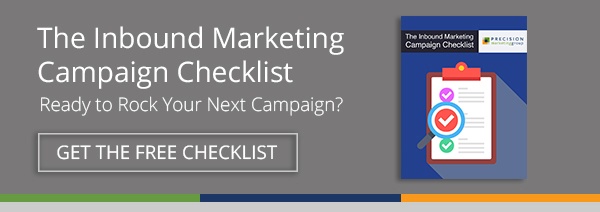As with any popular industry, there are so many inbound marketing statistics bouncing around the internet. Just do a Google search, and you’re likely to find articles titled “40 Inbound Marketing Stats that Will Blow Your Mind!” “55 Mind-Blowing Inbound Statistics!” “101 Inbound Marketing Statistics that Will Literally Rip Your Brain into Tiny Pieces!” yada, yada, yada.
Or instead of doing that and sifting through a million pieces of data for the B2B goodies, you can simply continue reading this article. You might recognize some of these numbers; others may give you some brand new insight. But we’ve selected the 12 inbound marketing stats of which B2B marketers should be taking notice – and we’ll tell you why!
1. Inbound marketing tactics generate 54% more leads than traditional paid marketing methods.
(Source: HubSpot)
Nothing makes a marketer happier than watching the leads pour in from multiple sources. And that’s exactly what takes place when you have an effective and comprehensive inbound marketing program set in motion. The inbound methodology is designed to help your company get found without interrupting the daily lives of your prospects. It’s about organically attracting targeted groups with a thoughtful strategy and nurturing those contacts who engage with your resources and content. And wouldn’t you know, these inbound-generated leads are ultimately even more likely to convert into customers. According to Search Engine Journal, SEO leads boast a 14.6% close rate, while leads sourced from outbound marketing (such as direct mail or print advertising) fall short with a close rate of 1.7%.
2. Inbound marketing costs 62 percent less per lead than traditional outbound marketing.
(Source: Mashable)
When you consider that 44% of direct mail is never opened and 86% of viewers skip over TV commercials, it’s obvious another solution is required to meet the needs of marketers, especially those working for SMBs who don’t have large allocations of money to work with. But let’s be honest – who in their right mind doesn’t want more bang for their buck? In this respect, the digital world has truly made a dramatic difference. And with all that extra room in the budget freed up, you can devote resources to other areas of your business that may need more attention.
3. 84% of B2B marketers use social media in some form.
(Source: Aberdeen Group)
From Google+ and Twitter to Instagram and Pinterest, promoting your B2B business via some form of social media is essential to thriving in a modern market. Yes, it’s most important to focus your efforts on a channel that effectively engages your target audience. But to be frank, prospects and customers expect you to have some kind of social representation to legitimize and support your business – no matter what industry you’re in. At the very least, you should create a complete LinkedIn company page to demonstrate you’ve been keeping up with the Joneses.
4. 80% of business decision makers prefer to get information in a series of articles versus an advertisement.
(Source: Exact Target)
That’s right, folks. In the B2B world, buyers are much more responsive to stories and written pieces than ads and taglines. They need to recognize you are the expert. And this requires substance. Therefore, potential buyers floating in the top of your funnel should be introduced to your company with blog posts, free resources and accessible offers such as white papers, eBooks, or tip sheets that educate them about trending industry topics and answer frequently asked questions.
5. Articles with images get over 94% more views than those without an image.
(Source: Jeff Bullas)
This stat really can’t be referenced enough… (In fact, we've mentioned this in a couple other blog posts.) We are all visual consumers – we eat with our eyes. So adding a little visual interest to an article on your blog, on your website, or in a social post is bound to increase the click-through rate. A clever image may even give your blog post that certain je ne sais quoi it needs in order to motivate viewers to share it via social media. Moreover, including the keyword in your image ALT tag can provide a nice little SEO boost from Google. Just be sure you select “Save for Web” when saving the image and scale down its size so it doesn’t hurt your page loading times (a known SEO detractor).
6. Marketers who have prioritized blogging are 13 times more likely to enjoy positive ROI from inbound marketing.
(Source: HubSpot)
Okay, so if running a company blog enhances website optimization, builds trust with your audience, and brings in more business, then what are you waiting for?! Content creation may take some time, but more than likely, you have some old presentation notes or documents on file that can be recycled into a juicy blog post with the right keyword strategy. Need help crafting a blogging strategy for your company? Check out our free eBook – Business Blogging 101 – for step-by-step tips and techniques.
7. Relevant emails drive 18 times more revenue than broadcast emails.
(Source: Jupiter Research)
This particular stat dramatically emphasizes the importance of segmenting your contact database and creating content specifically for your target buyers. To further drive the point home, the Custom Content Council reports that 61% of consumers say they feel better about a company that delivers custom content and that they’re also more likely to buy from that company. Research also shows the majority of consumers believe that organizations providing custom content are genuinely interested in building good relationships with them. So make the most of the data you collect via your landing page forms by creating offers and emails geared to your ideal customer groups.
8. Companies that blog typically receive 97% more inbound links.
(Source: HubSpot)
Inbound links are among the top three factors contributing to SEO, as they help Google determine the relevance and authority your web page carries regarding a particular set of search terms. But implementing a link building strategy that actually works is easier said than done. The best way to do this is to regularly publish and promote fresh, valuable and innovative blog content that will inspire others to build upon it within their own articles and posts. Keep in mind that infographics and research reports also tend to accrue referrals and backlinks – and depending on the authority of the referring website, you could earn some heavy duty SEO points.
9. 79% of marketing leads never convert into sales.
(Source: MarketingSherpa)
Surprised? We’re not. A lack of nurturing is the most common cause of this poor performance. When a visitor converts into a lead, score this lead and filter it into one of your database segments. When prospects demonstrate they are engaged with your business, it’s important to funnel them into a lead nurturing campaign to maintain their level of interest and provide them with information they can use to better understand your industry, as well as how your company can help them fulfill a need.
10. Nurtured leads make 47% larger purchases than non-nurtured leads.
(Source: The Annuitas Group)
That’s even more reason to cultivate relationships with those prospective buyers! Compared to non-nurtured leads, nurtured leads produce a 20% increase in sales opportunities. In addition, CSO Insights has stated that companies excelling at lead nurturing have 9% more sales reps making quota. And piggy-backing off of that, Forrester reports these companies that excel at lead nurturing generate 50% more sales-ready leads at a 33% lower cost. So what’s not to like about nurturing your leads?
11. 88% of B2B Marketers cite case studies as the most effective form of content marketing.
(Source: Content Marketing Institute)
B2B buyers want to know that you have legitimate experience with answering questions, solving problems, and providing solutions for businesses similar to their own. They also want to know you’ve continually made your customers happy. And what better way to showcase the proof in the pudding than with customer success stories and client testimonials. Case studies not only make for an interesting read, but they also validate your products and/or services and the information you are presenting to visitors on your website and throughout your other marketing channels.
12. 93% of business buyers use search to begin the buying process.
(Source: Marketo)
Despite how obvious this may seem, this might be the most important inbound marketing statistic of them all. Nearly all B2B professionals are beginning their buying cycles by using internet search engines. And that’s just it! The main reason inbound marketing exists. More and more, consumers tend to avoid the annoying interruptions and inconveniences of outbound marketing and actively do their own purchasing homework. And B2B buyers are even more prone to conducting their own research. If you’re strategically executing the right inbound marketing campaigns with the right tools, the buyers are going to find you and come to you – plain and simple.
If these inbound marketing statistics aren’t quite convincing enough for you, try out some inbound tactics yourself and see the difference! Or check out one of our own customer success stories. And if you’re still wondering how inbound can help you, feel free to inquire about one of our custom B2B inbound marketing assessments to find out what you and your website can do to start driving top-line revenue.











